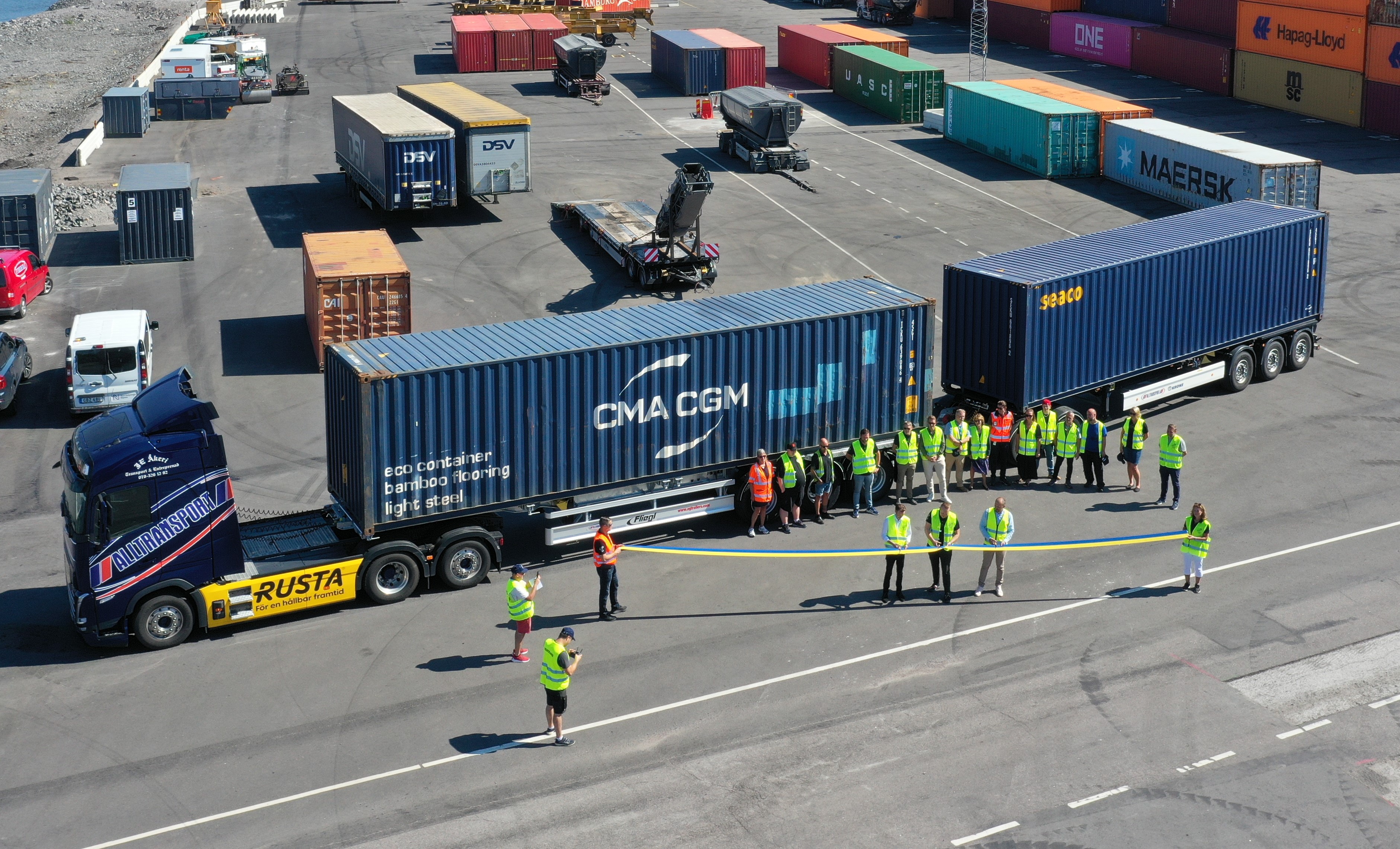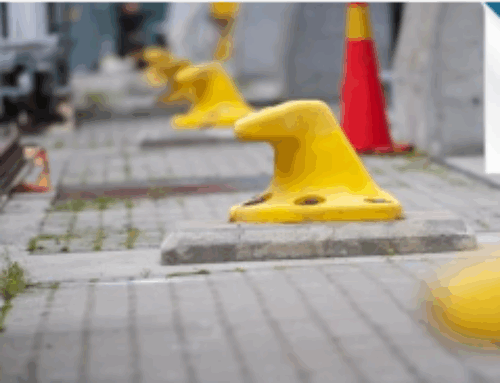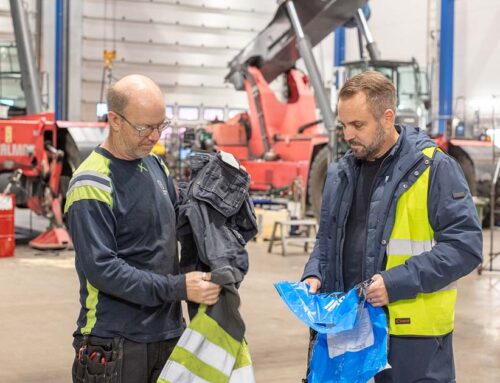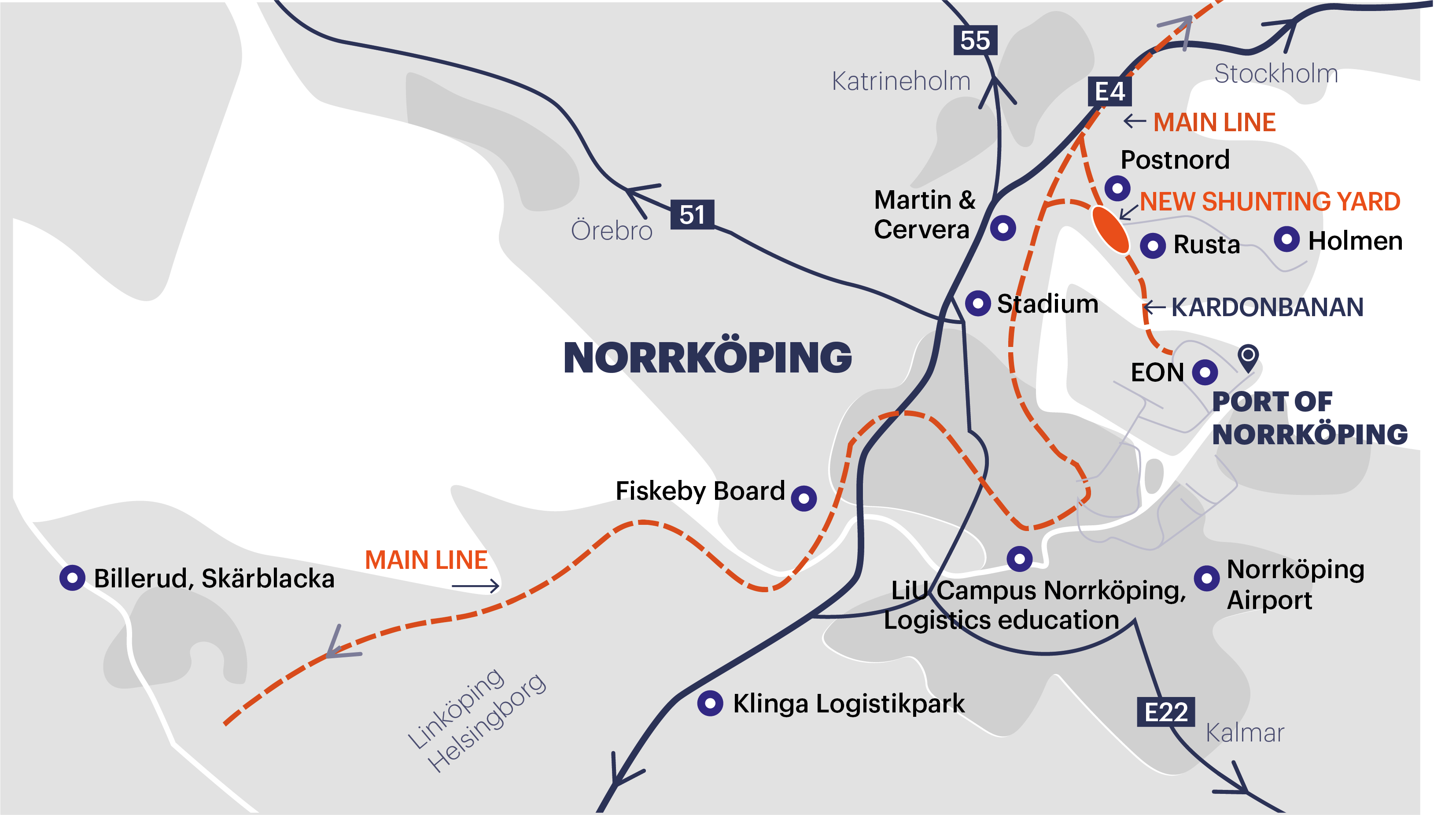
2024-06-27
A milestone for logistics and transportation in the region occurred when the first electric HCT vehicle (High Capacity Transport) started operating at the Port of Norrköping. This is the result of a collaboration between Alltransport, Rusta, and Stadium. The new HCT vehicle allows for a doubling of capacity compared to today’s transport.
“We are very proud to be pioneers in both fossil-free and emission-free HCT transport in the region. The final piece of the puzzle has now fallen into place, and Norrköping Municipality has done a great job prioritizing the work of mapping and approving the municipality’s roads to the port. This is a significant step forward for sustainable and efficient logistics, and we look forward to all the benefits it will bring to our customers and partners,” says Mathias Lidén, CEO of Alltransport.
The new electric HCT vehicle can carry 2 x 40-foot containers or 4 x 20-foot containers, compared to previously half that amount. The vehicle will run a fixed daily route between the Port of Norrköping, Stadium, and Rusta. The collaboration between Alltransport, Rusta, and Stadium is a good example of how companies can work together to drive innovation and sustainability in the logistics sector.
“We are very happy to receive the first HCT vehicle at the port. That it is also electric is especially positive for our customers, who will benefit from reduced climate impact throughout the value chain,” says Magnus Grimhed, Marketing & Sales Manager, Port of Norrköping.
—
FACTS
HCT, High Capacity Transport, refers to freight traffic with longer and heavier vehicles than what has previously been allowed as standard. The simple aim is to reduce the number of trucks for the same amount of goods, which leads to climate benefits, reduced road congestion, and increased efficiency (lower costs) for the transporter. Fewer vehicles can also partially address the widespread problem of driver shortages in the haulage industry. The regulations allow a gross weight of up to 74 tons (compared to the previous 64 tons), and a total length of up to 34.5 meters. This is nearly 30% longer than previously allowed, which practically means a possibility to reduce the number of trucks by about a third. There are two different sets of regulations for long and heavy vehicles, and where conditions are met, vehicles can be both long and heavy.
Read more here: Logistikia







